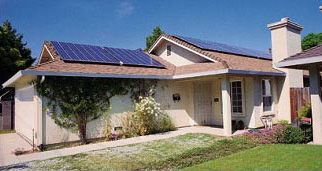Opportunities and Barriers for Solar Photovoltaics in Nebraska

|
From a request made by the Nebraska Energy Office through the Solar Technical Assistance Team program, the National Renewable Energy Laboratory provided a technical report in July 2014 on the opportunities and barriers for solar photovoltaics in the state.
The report, "Solar PV Deployment in Nebraska: Opportunities and Barriers" by David Peterson, Mike Coddington and Jacquelyn Pless describes the policy, regulatory, technical, and economic issues associated with Nebraska's public power utilities advancing solar photovolatic projects.
Key Points from the Report
- The report covers a number of issues concerning solar photovoltaics and public utilities in Nebraska, including:
- Solar photovoltaics have seen considerable growth since 2010 and analysts expect this rapid rate growth to continue until the end of 2016.
- Key drivers of solar photovoltaic markets in the U.S. are federal tax benefits, solar friendly state policies, utility incentives and solar capital cost reductions. In recent years, the dramatic drop in solar capital costs has spurred the dramatic increase in solar photovoltaic installations.
- The investment tax credit, a key federal tax benefit, is expected to step down from 30 percent to 10 percent at the beginning of 2017. This step down is expected to have a disruptive impact on solar photovoltaic markets across the U.S.
- Industry analysts indicate that distributed generation solar photovoltaics will be at least at parity with utility electricity rates in 47 states by 2016, including Nebraska. Lower capital costs, lower cost financing, and solar leasing business models will continue to drive the cost of solar downward. However, the step down in the tax credit will impact the competitiveness of solar in many states with less competitive solar markets (including Nebraska), likely making solar photovoltaics more expensive than the expected future electricity rates.
- The third-party owned solar leasing business model has become a dominant part of the most competitive solar markets (such as California, Arizona, and Colorado).
- The interconnection processes and procedures for the three main public power districts in Nebraska are currently structured for processing a limited number of distributed generation applications. If these utilities expect an increase in distributed solar photovoltaic systems in their territories, they should examine the best practices from the major solar photovoltaic utilities.
- Net metering policies are currently being debated and reconsidered in several states with large numbers of solar photovoltaic installations.
- Many states have passed solar rights laws that place limits on the ability of homeowner associations to restrict the installation of solar photovoltaic systems. Nebraska does not have a state wide solar rights law, which likely generates significant uncertainty for prospective purchasers of residential solar photovoltaic systems.
- Many other public utilities have implemented community solar programs. These programs vary considerably, but most appear to function much like a green power program.
- The integration of a solar photovoltaic system into a center pivot irrigation system has not been a common practice.